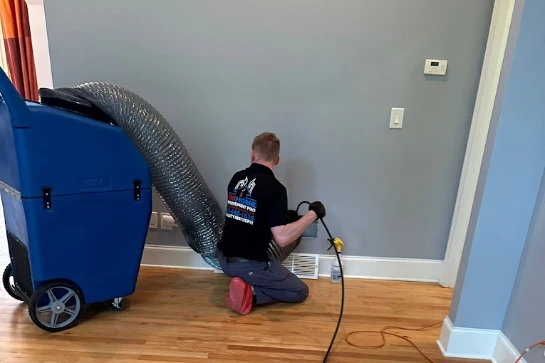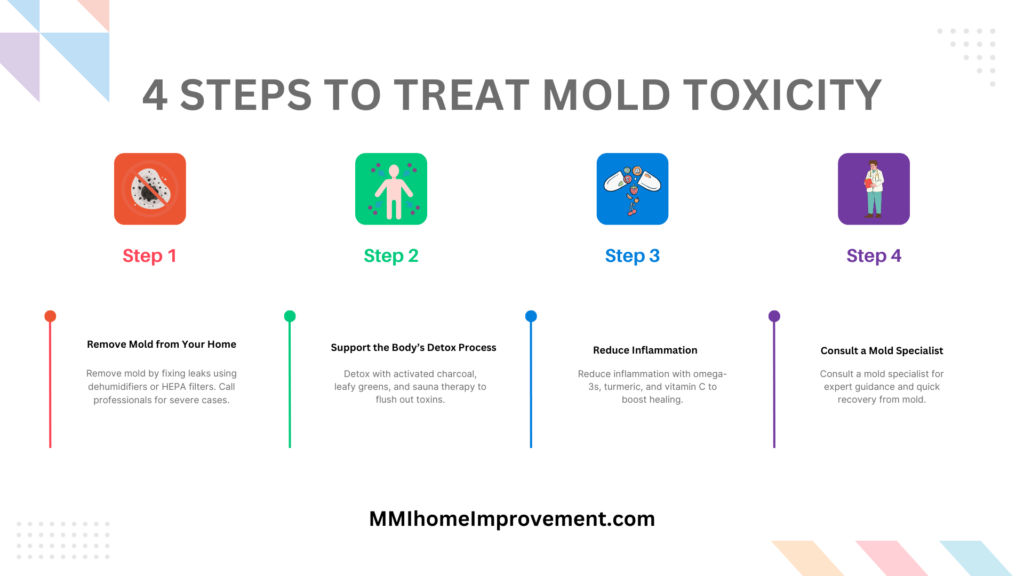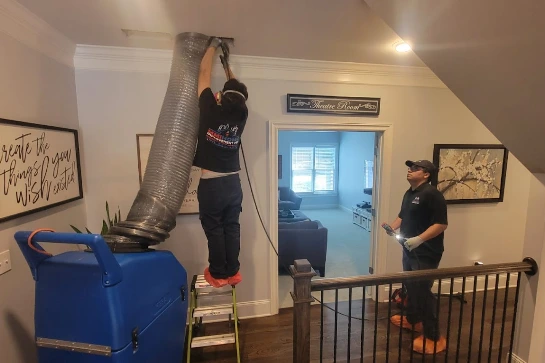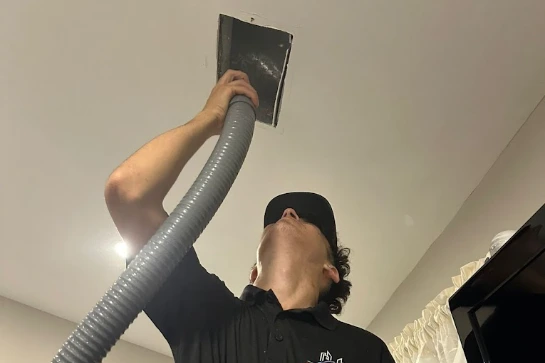Mold toxicity happens when people are exposed to harmful molds, often found in buildings with water damage. Breathing in mold spores over time can make some people sick, leading to symptoms like breathing problems, headaches, skin rashes, and feeling really tired.
However, mold toxicity can be hard to treat, so finding the best treatment for mold toxicity is important. So, call for Mold Air Duct Cleaning in Smyrna and nearby areas, and for reliable service, contact MMI Home Improvement Pro. Let’s break down what mold toxicity is and learn some simple steps on how to treat it.

What Are the Symptoms of Mold Toxicity?
Mold toxicity can make people feel sick in different ways, but here are some common symptoms:
- Breathing Problems: Coughing, sneezing, or having trouble breathing.
- Headaches and Tiredness: Feeling sleepy all the time or getting frequent headaches.
- Memory Problems: Trouble focusing or remembering things.
- Skin Reactions: Red, itchy skin or rashes.
- Stomach Issues: Upset stomach, cramps, or nausea.
Everyone reacts to mold differently, so while one person might feel very sick, another might barely notice symptoms.
4 Simple Steps for the Best Treatment of Mold Toxicity

Use the below code to embed this infographic
Step 1: Identifying and Removing Mold
The first step in treating mold toxicity is removing any mold in your home. Mold usually grows in wet, damp areas like basements, bathrooms, or attics. Here’s how you can reduce mold in your home:
- Check for Mold Spots: Look for black, green, or white spots on walls, ceilings, or floors.
- Improve Air Quality: Use an air purifier with a HEPA filter to trap mold spores.
- Control Moisture: Use dehumidifiers to keep air dry and fix any leaks in sinks, roofs, or pipes.
If there’s a lot of mold, it’s best to call a professional who knows how to safely remove it. According to the Centers for Disease Control and Prevention (CDC), getting rid of mold in your home can help reduce your symptoms and protect your health.
Step 2: Supporting the Body’s Detox Process
Our bodies try to get rid of toxins, including mold, but sometimes they need a little help. Certain foods, supplements, and activities can make this process easier:
Take Binding Agents
Binding agents are substances that stick to toxins so the body can remove them more easily. Here are some that may help:
- Activated Charcoal: Activated charcoal can trap toxins in the gut, making it easier for the body to get rid of them.
- Bentonite Clay: This natural clay absorbs toxins and can help remove them safely.
Doctors from Johns Hopkins Medicine have found that these types of treatments can help people with mold toxicity feel better by flushing out toxins.
Support the Liver with Healthy Foods
The liver is the main organ that removes toxins. Certain foods and supplements can help keep the liver healthy:
- Leafy Greens: Spinach, kale, and other greens are good for the liver.
- Milk Thistle and Dandelion Root: These herbs are often used to support the liver’s detox process.
- Water: Drinking lots of water helps the liver flush out toxins faster.
Try Sauna Therapy
Saunas help you sweat, which also releases toxins. Studies show that sweating through sauna therapy helps detox and is a natural way to support the body’s healing process.
Step 3: Lower Inflammation with Food and Supplements
When people have mold toxicity, their bodies often get inflamed, which can make them feel sick. Also, reducing inflammation helps the body feel better and heal faster.
- Omega-3 Fats: Omega-3 fats found in fish oil help reduce inflammation.
- Turmeric: The yellow spice turmeric has curcumin, which can lower inflammation.
- Vitamin C: This vitamin helps the immune system stay strong and fight toxins.
The National Institutes of Health (NIH) says that eating foods with these nutrients can lower inflammation and improve the immune system.
Step 4: Work with a Mold Specialist
Some doctors know a lot about mold toxicity and can help people find the best treatment plan. These doctors might suggest certain tests or therapies based on each person’s needs.
In fact, a study by the American Board of Clinical Toxicology found that people treated by doctors who specialize in mold felt better faster than those who didn’t see a specialist.


Final Tips to Recover from Mold Toxicity
Treating mold toxicity usually involves several steps, from removing the mold to eating healthy and supporting the body’s natural detox process. Some of the best treatments include:
- Get rid of any mold in your home – Fix leaks and keep areas dry to prevent mold growth.
- Detox with the right foods and supplements – Try binding agents and eat healthy foods to support your liver.
- Use anti-inflammatory foods and vitamins – Foods rich in omega-3 fats, vitamin C, and turmeric help fight inflammation.
- Talk to a mold specialist – A doctor experienced in mold toxicity can create a treatment plan for you.
People with mold toxicity can reduce their symptoms and feel healthier by following these steps.

